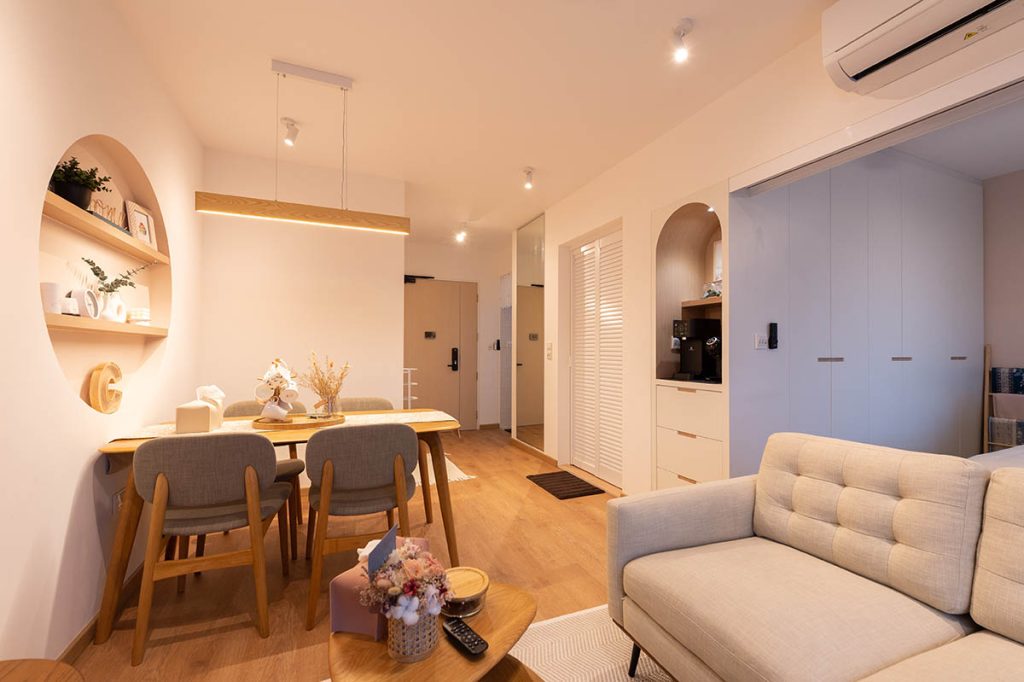
To create a tranquil and elegant home does not always require drastic changes. The slightest changes usually give the most delight. Transform Your Home with Minimalist Korean & Japanese Décor, sophistication, and usability into daily living spaces. This philosophy of style extends further than aesthetics—it means achieving balance and peacefulness for your home. If you need inspiration for home enhancing your interiors with minimilist korean & japanese decor that calm but elegant touches, Korean and Japanese minimalism would prove the perfect place to begin.
Minimalism as a Way of Living
Both Japanese and Korean interiors base their thinking on the principle of “less is more.” Unlike Western homes which prioritize abundance, these prioritize the essentials. Through the concept of minimalism, you eliminate the population of unnecessary items from your home, freeing up not only space for movement but also for serenity of mind.
Principles of Japanese Simple Interior Decor
Japanese interior design is founded upon wabi-sabi—meaning imperfection and simplicity. Subdued colors, natural wood, sliding doors, and low-rising furnishings typify this interior style. Ambient lighting also takes center stage, creating a warm and inviting atmosphere. Think tatami mats, shoji panels, and bonsai plants—all features designed to leave you in harmony with the great outdoors and inner peace.
Essential Features of Korean Minimalist Interior Design
Korean minimalism, however, combines the modern with the traditional. Interior colors tend toward neutrality, such as whites, creams, and pale shades, while spaces remain uncluttered by the use of clean lines. Decor frequently features multi-purpose furnishings, such as beds with built-in storage or collapsible tables, for the full use of compact spaces. Korean interior design also values natural lighting, frequently leaving windows uncovered or lightly draped, for a sense of openness and airiness. Merging Korean & Japanese Simple Styles
What happens when you merge the two? You get a tranquil home that balances modern chic with timeless tradition. Pair a Japanese low wooden table with sleek Korean seating cushions, or mix a soft neutral Korean sofa with Japanese bamboo décor. This hybrid approach allows you to create a personalized sanctuary that feels authentic and cozy.
Serenity Colors That Communicate
Subdued colors dominate for both schemes of décor. Whites, beiges, light grays, and raw earth-colored browns are the favored colors. Soft color accents may be introduced with natural elements like green plants or subdued pottery. The palette not only retains the calm aesthetics of the spaces but also ensures maximum reflection of natural lighting and makes rooms appear larger and cozier.
Pieces That Define Minimalism
Select multi-purpose furniture. Instead of a floor table, a Japanese floor table or a Korean storage bench occupies less space but still exudes style. Simple line bed and handleless cabinets assist in the uncluttered appearance. Keep the furnishings from taking center stage but adding value instead.
Decluttering as the Initial Step
Whether your décor or furnishings are beautiful, a clutter will break up the minimalistic atmosphere. Start by eliminating what you don’t need, leaving just those pieces which perform a function or cause a smile. This Korean and Japanese home-inspired practice implies every item within your environment holds a meaning.
The Role of Natural Light
Large windows, gauzy drapes, and open floor plans are prominent elements of this décor theme. The natural lighting rejuvenates the space and reduces the need for manmade lighting. At dusk, the soft yellow lamps or candles come into use, which further perpetuates the warm theme.
Adding Nature Indoors
Nature takes a prominent place in Japanese and Korean minimalism. A bonsai tree, a few stalks of bamboo, or a small pot of greenery all involve putting nature into the décor. The items not only provide a form of loveliness but also a boost for air quality and a refreshing element into the home.
Textiles and Fabrics
Lightweight cottons, linens, and natural fibers define this style. Avoid heavy or highly patterned fabrics. Instead, try pale curtains, unpatterned rugs, and light bedding so the room remains light. Korean pale colors and Japanese natural earth colors also tend to complement each other when they appear as fabrics.
Practical Steps for Beginning Your Makeover
Starting from one room rather than the entire home.
Invest in multi-functional furniture.
Utilize a simple color palette.
Introduce a natural aspect with plants.
Make décor elements simple but significant.
Why the Simple Korean & Japanese Décor?
The best part is the manner in which it not only updates your house but your lifestyle. The decluttering and focus on minimalism provide you with a peaceful space from which relaxation comes easily. It’s not just trendy; it’s conscious living.
Conclusion
Korean and Japanese minimalism décor provides a fusion of heritage, functionality, and tranquility. Through its use of muted hues, organic materials, and plain designs, it provides a place for breathing, thinking, and relaxing. Start small or go all out, your living space may provide a haven of calmness and loveliness.
